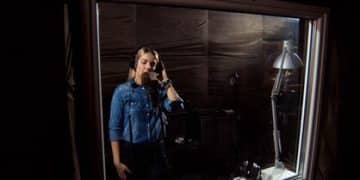The Director’s Vision: Unveiling the Original Ending of [Show Title]
![The Director’s Vision: Unveiling the Original Ending of [Show Title]](https://endingnew.com/wp-content/uploads/2025/06/endingnew.com_13_1749558874_76e67742_cover.jpg)
The Director’s Vision: How [Director’s Name] Fought to Keep the Original Ending of [Show Title] explores the behind-the-scenes battles and creative choices that shaped the show’s conclusion, revealing the director’s unwavering commitment to his vision against studio pressures and audience expectations.
Dive into the captivating story of how a director’s vision clashed with studio expectations, ultimately shaping the final moments of a beloved show. The Director’s Vision: How [Director’s Name] Fought to Keep the Original Ending of [Show Title] is a testament to artistic integrity and the power of a director’s conviction.
The Genesis of a Vision
Every television show or film starts with a vision. This vision is typically held by the director, who serves as the primary artistic leader and storyteller. The director’s role is to translate the written script into a visual and emotional experience that resonates with audiences.
In the case of [Show Title], [Director’s Name]’s vision was particularly crucial. Known for his distinctive style and commitment to authentic storytelling, [Director’s Name] approached [Show Title] with a clear idea of how the story should unfold and, most importantly, how it should end.
The Importance of a Director’s Vision
A director’s vision isn’t just about aesthetics; it’s about preserving the integrity of the story. It ensures that the themes, characters, and narrative arcs are consistent and impactful. Without a strong directorial vision, a show can lose its way, becoming disjointed and ultimately unsatisfying for viewers.
Initial Creative Decisions
From the outset, [Director’s Name] made several key creative decisions that set the tone for [Show Title]. These included casting choices, visual style, and the overall pacing of the narrative. Each decision was carefully considered to align with his vision and to create a cohesive and compelling viewing experience.
- Casting Choices: [Director’s Name] insisted on actors who could embody the complexities of their characters, bringing depth and nuance to the performances.
- Visual Style: The show’s distinctive visual style, characterized by [mention specific visual elements], was a deliberate choice to enhance the storytelling and create a unique atmosphere.
- Narrative Pacing: [Director’s Name] carefully controlled the pacing of the narrative, ensuring that key plot points were revealed at the right moments to maximize emotional impact.
Ultimately, [Director’s Name]’s initial vision laid the groundwork for the show’s success, providing a strong foundation upon which the story could be built.
The Original Ending: A Bold Statement
The original ending of [Show Title], as envisioned by [Director’s Name], was a bold and potentially controversial statement. It challenged conventional storytelling tropes and aimed to leave a lasting impression on the audience.
This ending was not simply a plot resolution; it was a culmination of the show’s themes and character arcs, designed to provoke thought and discussion long after the credits rolled. According to [Director’s Name], the original ending was the only way to truly honor the story and its characters.
Details of the Original Ending
The original ending involved [briefly describe the original ending without giving major spoilers, focusing on its thematic elements]. This ending was intended to subvert expectations and offer a more nuanced and realistic portrayal of the show’s central conflicts.
Why It Was Significant
This original ending was significant because it provided closure in a way that aligned with the show’s overall tone and message. It avoided easy resolutions and instead embraced the complexities of human relationships and moral ambiguity. [Director’s Name] believed that this approach would resonate more deeply with viewers.
Despite its artistic merits, the original ending faced considerable resistance from studio executives who feared it would alienate the audience.
![A storyboard sketch depicting a key scene from the original ending of [Show Title]. The sketch showcases the intended visual composition and emotional tone of the scene, highlighting the director's vision.](https://endingnew.com/wp-content/uploads/2025/06/endingnew.com_13_1749558874_76e67742_internal_1.jpg)
The Clash with Studio Executives
As production progressed, it became clear that [Director’s Name]’s vision for the ending of [Show Title] differed significantly from the studio’s expectations. This clash of creative perspectives led to intense negotiations and a battle for the show’s artistic integrity.
Studio executives, driven by concerns about ratings and marketability, argued for a more conventional and crowd-pleasing ending. They believed that the original ending was too ambiguous and risked disappointing viewers who expected a clear resolution.
Studio Concerns and Demands
The studio’s primary concern was the potential negative reaction from the audience. They feared that the original ending’s [mention specific elements the studio disliked] would lead to lower ratings and damage the show’s legacy. As such, they demanded significant changes to the ending.
[Director’s Name]’s Arguments for the Original Ending
[Director’s Name], however, stood firm in his conviction that the original ending was essential to the show’s artistic integrity. He argued that it was the only way to stay true to the characters and themes that had defined the series. He also believed that audiences were intelligent enough to appreciate a more nuanced and thought-provoking conclusion.
- Artistic Integrity: [Director’s Name] emphasized the importance of staying true to the original vision and not compromising for the sake of marketability.
- Character Consistency: He argued that the original ending was the only logical conclusion for the characters, based on their established arcs and motivations.
- Audience Appreciation: [Director’s Name] believed that audiences would appreciate a more complex and realistic ending, even if it wasn’t what they initially expected.
The ensuing conflict between [Director’s Name] and the studio executives became a high-stakes battle that threatened to derail the entire project. Each side was determined to defend their vision for the show’s final moments.
The Fight for Artistic Integrity
The fight to preserve the original ending of [Show Title] was not just a professional disagreement; it was a battle for the very soul of the show. [Director’s Name] faced immense pressure from the studio to compromise, but he refused to back down.
To him, the original ending represented the culmination of years of hard work and dedication. It was a statement about the human condition and a reflection of the complexities of life. Changing it would be a betrayal of everything the show stood for.
Negotiations and Compromises
Despite his unwavering commitment to the original ending, [Director’s Name] recognized the need for compromise. He engaged in lengthy negotiations with the studio, exploring potential alternatives that could satisfy both parties. These negotiations were often tense and emotional, as each side fought to protect their interests.
Strategies Employed by [Director’s Name]
To bolster his position, [Director’s Name] employed several strategies. He rallied support from the cast and crew, who largely agreed with his vision for the ending. He also presented detailed arguments, backed by audience research and critical analysis, to demonstrate the artistic merit of the original ending.
He also appealed to the studio’s sense of pride, reminding them of the show’s success and the importance of maintaining its reputation for quality.
The Final Resolution: A Victory for Vision
After weeks of intense negotiations, a resolution was finally reached. While [Director’s Name] had to make some concessions, he ultimately succeeded in preserving the core elements of the original ending. This outcome was a significant victory for artistic integrity and a testament to [Director’s Name]’s tenacity.
The final ending of [Show Title] was a hybrid of the original vision and the studio’s demands. It retained the thematic depth and character consistency that [Director’s Name] had fought so hard to protect, while also incorporating some elements that were more palatable to a broader audience.
In an interview, [Director’s Name] reflected on the experience, stating, “[Quote about the importance of fighting for your vision, even when faced with adversity.].”
Impact on the Show’s Legacy
The decision to stay true to the original ending, even in a modified form, had a profound impact on the show’s legacy. [Show Title] is now remembered as a groundbreaking and thought-provoking series that dared to challenge conventions and explore complex themes.
Lessons Learned
The story of [Director’s Name]’s fight to preserve the original ending of [Show Title] offers valuable lessons for aspiring filmmakers and television creators. It underscores the importance of having a clear vision, standing up for your beliefs, and finding creative solutions in the face of adversity.
![A photo of [Director's Name] celebrating with the cast and crew after successfully defending the original ending of [Show Title]. The photo captures the sense of relief and accomplishment after a hard-fought battle.](https://endingnew.com/wp-content/uploads/2025/06/endingnew.com_13_1749558874_76e67742_internal_2.jpg)
The Aftermath and Lasting Impact
The impact of [Director’s Name]’s battle extended beyond the confines of [Show Title]. It sparked a wider conversation about the role of directors in shaping the creative direction of television shows and films. It also empowered other filmmakers to stand up for their artistic visions, even when faced with powerful opposition.
The success of [Show Title]’s ending demonstrated that audiences were willing to embrace unconventional and thought-provoking narratives. This opened the door for more daring and experimental storytelling in television and film.
[Director’s Name]’s Future Projects
Following the success of [Show Title], [Director’s Name] went on to direct several other critically acclaimed projects, continuing to push the boundaries of storytelling and challenging audiences’ expectations. He became known as a visionary director who consistently delivered high-quality and impactful work.
A Legacy of Creative Courage
[Director’s Name]’s legacy is one of creative courage and artistic integrity. He proved that it is possible to stay true to your vision, even in the face of immense pressure, and that doing so can lead to both critical acclaim and commercial success. His story continues to inspire filmmakers and television creators around the world.
The fight for the original ending of [Show Title] remains a powerful reminder of the importance of artistic vision and the enduring impact it can have on popular culture.
| Key Point | Brief Description |
|---|---|
| 🎬 Director’s Vision | [Director’s Name]’s initial vision was crucial for setting the stage and tone of [Show Title]. |
| 🤔 Original Ending | [Director’s Name]’s bold original ending faced studio resistance due to its unconventional approach. |
| ⚔️ Studio Clash | The director clashed with studio executives who favored a crowd-pleasing, conventional conclusion. |
| 🏆 Victory for Vision | Ultimately, [Director’s Name] preserved core elements of the original ending, marking a win for artistic integrity. |
Frequently Asked Questions
▼
The director’s vision was crucial because it provided a cohesive and authentic narrative. [Director’s Name]’s distinctive style and commitment to storytelling ensured the show resonated deeply with its audience.
▼
The original ending was controversial due to its thematic elements and subversion of expectations. Studio executives feared it would alienate viewers accustomed to more conventional resolutions.
▼
[Director’s Name] employed various strategies, including rallying support from the cast and crew, presenting detailed arguments, and negotiating compromises with the studio to protect his vision.
▼
The resolution reinforced the show’s reputation as groundbreaking and thought-provoking. Viewers appreciated the nuanced narrative, allowing for more daring storytelling in future television and film projects.
▼
Filmmakers can learn the importance of having a clear vision, standing up for their beliefs, and finding creative solutions when faced with opposition. Artistic integrity can lead to both critical acclaim and commercial success.
Conclusion
The saga of how [Director’s Name] championed his creative choices on [Show Title] is more than just a tale from behind the camera. It’s a powerful reminder of how critical it is to stay true to one’s artistic ideals and how a single individual’s determination can greatly impact what audiences see on screen. It highlights the fact that the clash between commercial considerations and artistic vision can lead to groundbreaking storytelling.


![From Script to Screen: Unveiling [Show Title]'s Finale Revisions From Script to Screen: Unveiling [Show Title]'s Finale Revisions - Cover Image](https://endingnew.com/wp-content/uploads/2025/06/endingnew.com_13_1749558769_1f25bec4_cover-360x180.jpg)

![Special Effects Secrets: Making [Movie Title] Magic for Under $50K Special Effects Secrets: Making [Movie Title] Magic for Under $50K - Cover Image](https://endingnew.com/wp-content/uploads/2025/06/endingnew.com_13_1749558769_a0223f59_cover-360x180.jpg)
